A product master data model organizes all essential product information in a single, structured system. You need product master data management to reduce errors, improve decision-making, and boost revenue. Many businesses struggle with fragmented product data, leading to costly mistakes and slow processes. When you manage data effectively, you can see up to a 30% increase in customer satisfaction and a 40% improvement in decision-making speed. FineDataLink helps you integrate and synchronize product data, solving common data management challenges.
- Accurate data reduces errors and costs.
- Reliable data enables informed decisions.
- Enhanced data management increases revenue.
Product Master Data Model

Key Elements
A product master data model forms the backbone of your data management system. You need to understand its key elements to ensure effective product master data management. When you build a robust model, you create a foundation for accurate reporting, efficient operations, and better business decisions.
You will find that leading organizations include several standard components in their product master data model:
- Data governance: You set policies and standards for data quality and security.
- Data modeling: You create a structured representation of master data entities.
- Data integration: You consolidate data from multiple sources.
- Data quality management: You ensure data accuracy and consistency.
- Master data consolidation: You merge duplicate records to achieve a single source of truth.
- Workflow and business process management: You align data with business processes.
- Security and privacy: You protect master data from breaches.
- Analytics and reporting: You leverage data for insights and decision-making.
- Technology and tools: You use appropriate platforms and tools for product master data management.
In retail and other industries, you must also consider critical data elements. These include customer data, product data, transaction data, personally identifiable information, and organizational data. Each element plays a role in supporting your business operations and compliance requirements.
Tip: When you focus on these key elements, you strengthen your data management and lay the groundwork for scalable growth.
Structure and Organization
The structure and organization of your product master data model determine how efficiently you can manage, retrieve, and report on your data. You need to choose a structure that fits your business needs and supports your product master data management goals.
Common data structures used in organizing product master data models include:
- Hierarchical: You organize data in a tree-like format, which allows for parent/child relationships.
- Relational: You use tables that link data through relationships.
- Object-oriented: You structure data as objects, combining data and behavior.
- Entity-relational: You blend entity and relational models for flexible organization.
- Dimensional: You optimize data for analytics and reporting, often in data warehousing.
| Data Structure Type | Description |
|---|---|
| Hierarchical | Organizes data in a tree-like format, supporting parent/child relationships. |
| Relational | Uses tables linked by relationships for flexible data management. |
| Object-oriented | Structures data as objects, encapsulating both data and behavior. |
| Entity-relational | Combines entity and relational models for advanced organization. |
| Dimensional | Optimized for analytics and reporting, common in OLAP systems. |
You should also consider how your organization customizes the product master data model. Many companies use multi-domain solutions to manage different types of master data in one system. Hierarchical relationships help you handle complex data structures. Multi-channel capabilities let you manage data from various sources, which is essential in today’s data-rich environments. If your business operates globally, you may need multi-cultural strategies to address regional differences.
A well-organized product master data model improves data retrieval and reporting efficiency. When your data is consistent and accurate across all systems, you reduce errors and discrepancies. This leads to better decision-making because you always have access to reliable information. Automated processes become possible, which streamlines reporting and inventory management. As a result, you deliver a better customer experience.
You must remember that product master data management is not a one-time task. You need to refine and optimize your data model continuously. This approach ensures your data remains accurate, consistent, and useful as your business evolves.
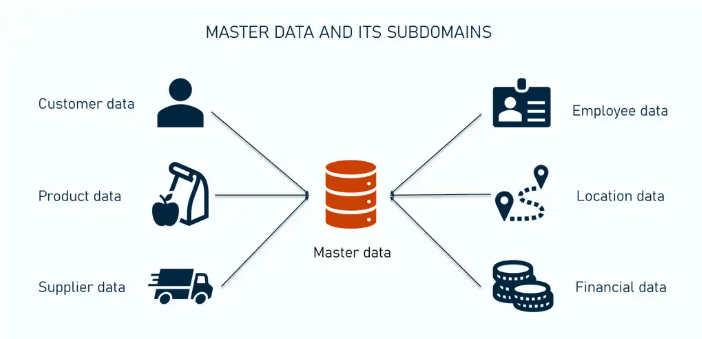
Product Master Data Model Management
Importance for Business
You need product master data management to unlock the full value of your product information. When you centralize and organize your data, you create a foundation for business growth and efficiency. A robust data management system helps you avoid costly errors, streamline operations, and deliver a consistent customer experience.
Consider the main business benefits of product master data management. The table below summarizes how it impacts your organization:
| Benefit | Description |
|---|---|
| Improved Data Quality | High-quality product data is essential for providing accurate information across all sales channels, ensuring customers receive consistent experiences. |
| Enhanced Customer Experience | Accurate product specifications across various platforms prevent customer confusion and dissatisfaction, reducing returns and maintaining brand trust. |
| Regulatory Compliance | Accurate product data management is crucial in regulated industries to avoid liabilities from incorrect product information, such as dosage errors in medications. |
| Operational Efficiency | A centralized product master data system reduces errors and bottlenecks caused by inconsistent data, streamlining operations and improving access to information across departments. |
| Better Decision-making | Reliable product data enables organizations to gain better insights from analytics, leading to informed decision-making, especially with the increasing use of AI tools in business processes. |
You gain a competitive edge when you use product master data management to improve data quality and consistency. Accurate product data supports all your sales channels, so customers always see the correct information. This consistency builds trust and reduces the risk of returns or complaints.
Regulatory compliance becomes much easier with effective product master data management. You maintain comprehensive records and ensure all teams work with the same up-to-date data. This approach is essential in industries like pharmaceuticals or food, where mistakes can lead to serious consequences. Technology gives you better visibility and control, making it easier to meet regulatory requirements.
Note: Centralizing product information in a single source of truth ensures that every department works with the latest and most accurate data. This step is crucial for compliance and operational efficiency.
You also see improvements in operational efficiency. When you eliminate data silos and reduce manual processes, your teams work faster and make fewer mistakes. Reliable data supports better analytics, so you can make informed decisions and respond quickly to market changes.
Data Quality and Consistency
You cannot achieve the full benefits of product master data management without focusing on data quality and consistency. Poor data quality leads to flawed reporting, misleading analytics, and poor customer engagement. The table below highlights the impact of low-quality data on your business:
| Impact Area | Description |
|---|---|
| Flawed Reporting | Poor data quality leads to inaccurate reporting, affecting decision-making in product lifecycle management. |
| Misleading Analytics | Inaccurate data can result in misleading analytics, hindering effective product management. |
| Poor Customer Engagement | Outdated customer information can lead to poor engagement and lower satisfaction rates. |
You risk losing trust in your data if you do not maintain high standards. Teams may become less productive, and you could face compliance issues. Decision-making suffers when you rely on inaccurate or outdated information.
To ensure data consistency across multiple systems, you need clear strategies. Data validation reviews product data for accuracy and speeds up information processing. Standardizing data into a universal format ensures consistency across databases. Centralizing data in a single source of truth allows for seamless, instant exchange of product information.
Tip: Establish clear governance by defining data ownership, update workflows, and quality standards. Without strong governance, even the best technology cannot prevent chaos. Designate one authoritative system for product data and route all updates through it.
You can also use technical strategies to maintain consistency:
| Strategy | Description |
|---|---|
| Master-slave replication | One system (the master) holds the main copy of the data, while one or more systems (the slaves) hold copies. Updates are made on the master and then copied to the slaves, ensuring consistency with a slight delay. |
| Two-phase commit protocol | A handshake between systems to ensure a transaction is fully completed or not done at all. If any system declines during the first phase, the transaction is canceled, ensuring accuracy in critical transactions. |
| Eventual consistency | Changes are made locally first and then propagated across systems over time, allowing for availability over instant consistency, suitable for large-scale systems. |
| Data sharding | Breaking data into smaller pieces (shards) managed independently, which can enhance performance but requires a plan for maintaining consistency across shards. |
You should regularly validate and standardize your product data. This process keeps your information clean and usable for all trading partners. When you combine these strategies with strong product master data management, you increase sales, improve customer satisfaction, and support business growth.
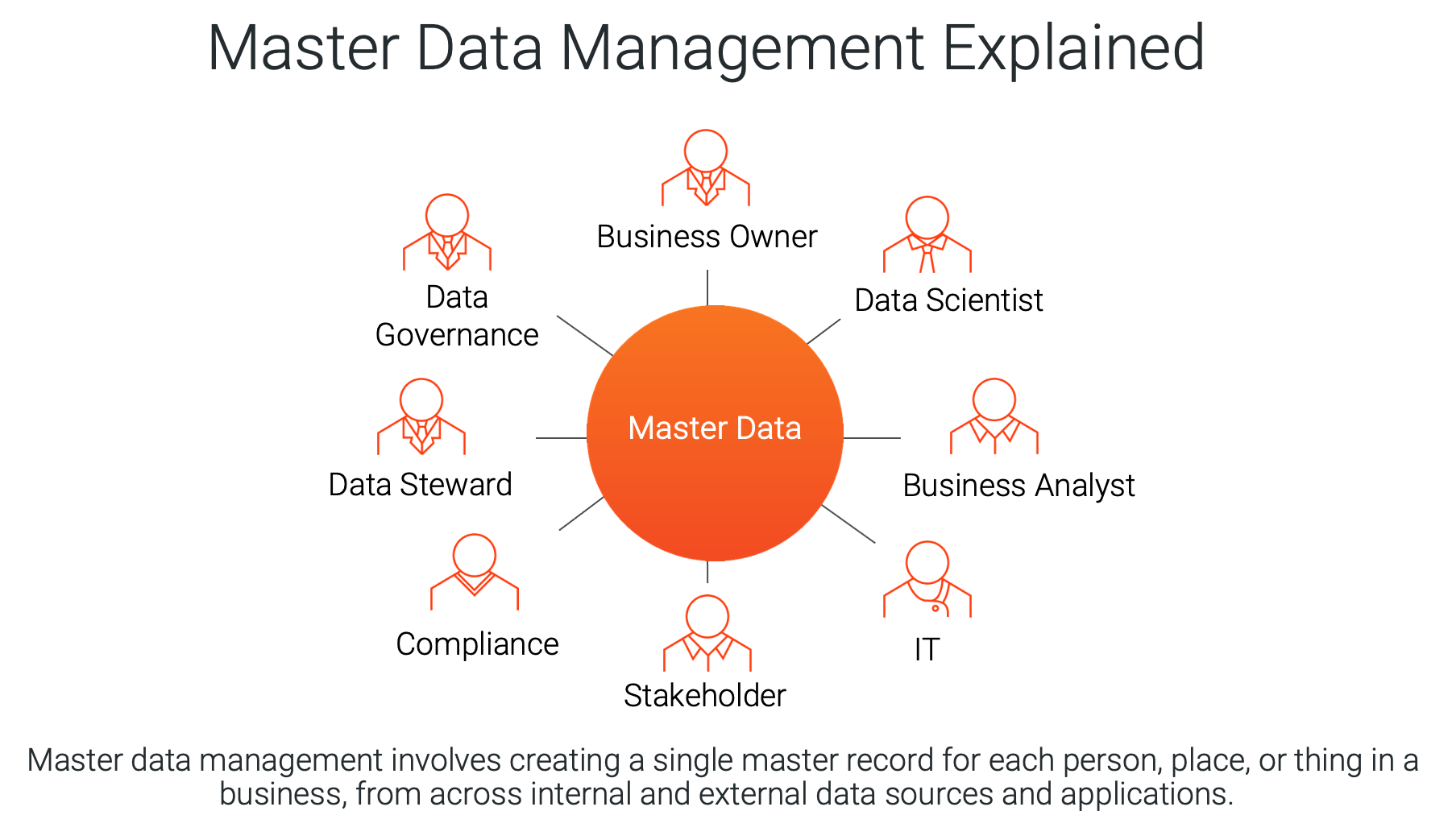
Challenges in Product Master Data Model

Data Silos
You often face data silos when you manage product information across different departments or systems. Data silos occur when information stays isolated within specific teams or applications. This isolation makes data management difficult and leads to several challenges:
- Multiple apps and sources of data create isolated pockets of information. Many organizations use various SaaS tools that do not connect well.
- Company growth can result in uncoordinated processes. As your business expands, you may add new systems without proper integration.
- Organizational structures sometimes prevent data sharing. Bureaucratic systems and a lack of shared responsibility keep data locked within departments.
- Departmental isolation means teams work independently. This separation reduces collaboration and data sharing.
- Poor communication within your organization can make it hard to break down silos.
- Technology disparities across departments create barriers to integration.
These silos impact the accuracy and timeliness of product information. You may see data inconsistency because different teams interpret or alter data in their own ways. Decision delays happen when you wait for data to move between departments. Errors and inaccuracies increase as data moves further from its source. Teams often waste resources reconciling conflicting data or duplicating efforts. Strategic misalignment can occur when teams do not share the same information.
Tip: You can reduce data silos by adopting unified data management practices and encouraging cross-department collaboration.
Real-Time Synchronization
Real-time synchronization ensures that your product data stays consistent across all platforms and systems. You need this capability to support fast decision-making and deliver accurate information to customers. Several technologies help you achieve real-time synchronization:
| Technology Type | Strengths | Limitations |
|---|---|---|
| Traditional ETL/ELT Tools | Automated pipelines, robust security, pre-built connectors | Primarily batch-oriented, not real-time |
| Reverse ETL Tools | Simplifies data activation for business teams | Limited to one-way flows, lacks real-time features |
| Event-Driven Architectures | High scalability and flexibility for real-time processing | Requires technical expertise to implement |
| Peer-to-Peer Sync Solutions | Fast, reliable sync across distributed systems | Focused on file sync, not structured data |
| Stacksync | Bi-directional sync, no-code configuration | N/A |
You may see companies use event-driven architectures for high scalability. Some organizations choose tools like Stacksync for true bi-directional synchronization and easy configuration. For example, a renewable energy company uses Stacksync to keep customer data consistent between sales and billing systems, which supports real-time billing and customer support.
However, you face several challenges when you implement real-time synchronization. High data volumes can overwhelm your systems. You must connect with many SaaS tools, which increases complexity. Frequent software updates may break integrations if you lack proper governance. Regulatory compliance and security requirements add more layers to data management. Legacy systems can also make integration difficult.
You need strong data management strategies to overcome these challenges. Focus on scalable solutions, clear governance, and regular monitoring to keep your product data accurate and up to date.
FineDataLink for Product Master Data Model
Integration Capabilities
You need a solution that connects all your product data sources for effective data management. FineDataLink offers integration capabilities that help you unify data from relational databases, non-relational databases, APIs, and files like Excel or TXT. This versatility allows you to harmonize product information, no matter where it resides. FineDataLink supports seamless integration and transformation of data across various systems. You can access and synchronize data efficiently, which is essential for maintaining a single source of truth.
| Integration Capability | Description |
|---|---|
| Data Source Support | Supports relational databases, non-relational databases, API-based data, and file data (Excel, TXT). |
| Real-time Synchronization | High-performance engine for real-time data synchronization, enhancing data warehouse time sensitivity. |
| Data Processing Flexibility | ETL-based flexible data development and various task engines for preprocessing data. |
You can use FineDataLink to break down data silos and improve data management across your organization.
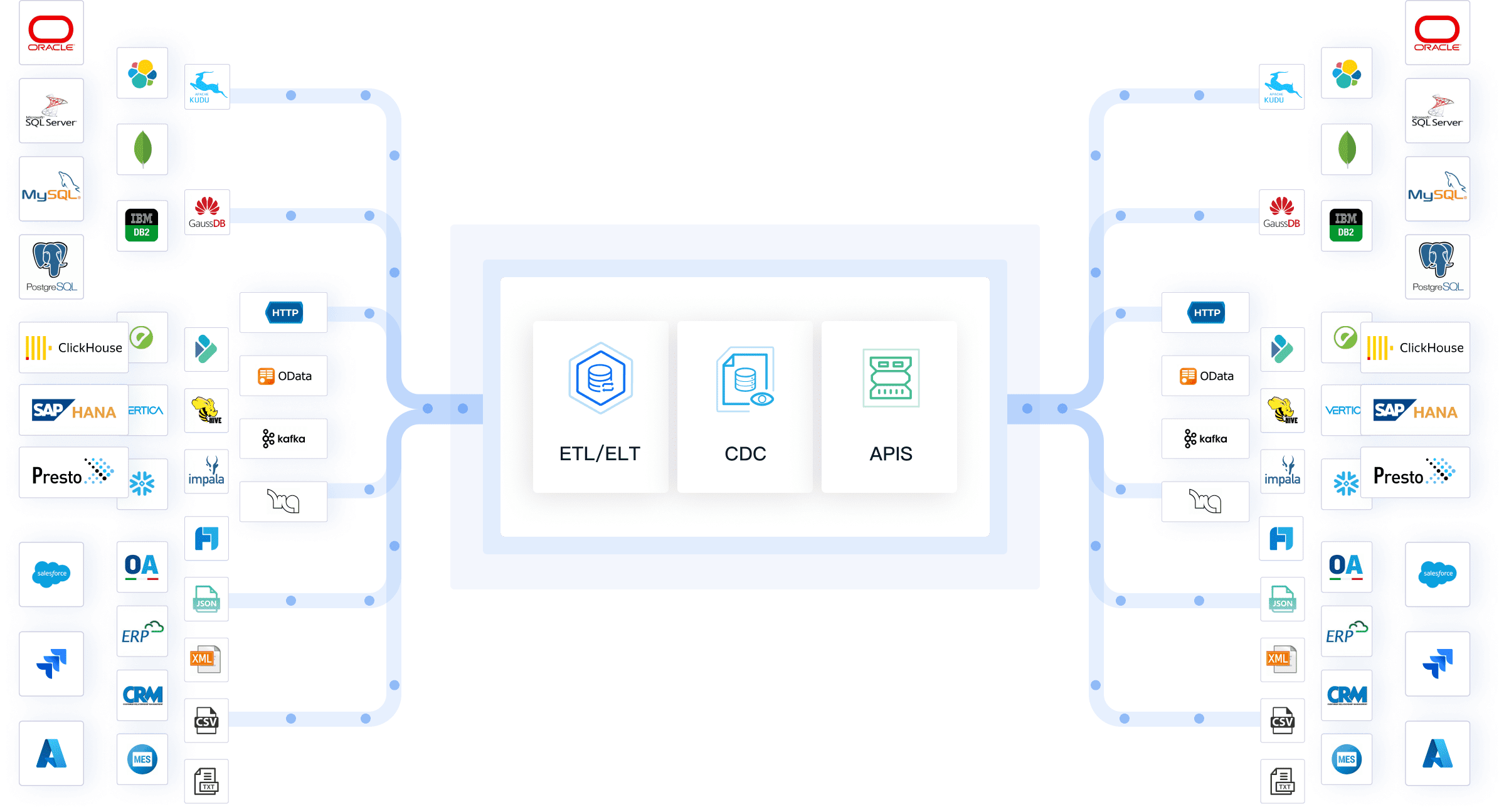
Real-Time Data Sync
You need real-time synchronization to keep your product master data accurate and up-to-date. FineDataLink provides a high-performance engine for real-time data integration and synchronization. This feature empowers you to turn raw data into actionable insights quickly. You can automate data synchronization and transformation, which is crucial for maintaining consistency across different formats and platforms. FineDataLink stands out because it supports a wide range of data sources and automates these processes, making it easier for you to manage product data.
| Feature | Description |
|---|---|
| Tool | FineDataLink |
| Functionality | Real-time data integration and synchronization |
| Benefit | Empowers organizations to turn raw data into actionable insights |
You can rely on FineDataLink to ensure your product data remains consistent and accessible for decision-making.
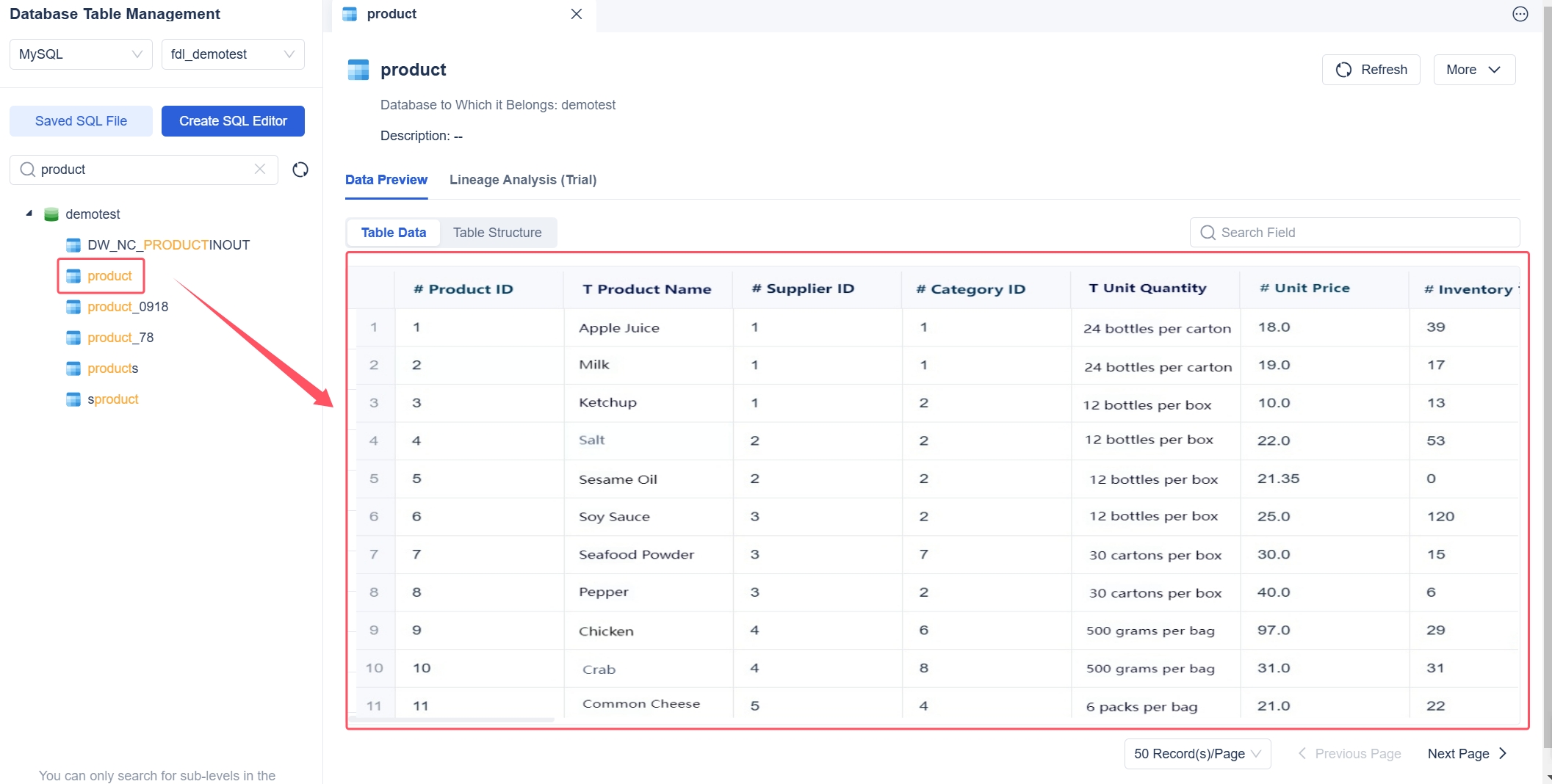
ETL and API Support
You need robust ETL and API support for efficient product data management. FineDataLink serves as an effective ETL tool for building data warehouses and consolidating data from various sources. The platform supports real-time data synchronization with minimal latency, so you always have timely access to product information. You benefit from a user-friendly interface that simplifies deployment and operation. FineDataLink offers over 100 connectivity options, allowing you to integrate diverse data sources with ease.
| Feature | Description |
|---|---|
| ETL Capabilities | FineDataLink serves as an effective ETL tool for building data warehouses. |
| Real-time Synchronization | Supports real-time data synchronization with minimal latency. |
| User-friendly Interface | Provides a visual and user-friendly interface for easy deployment. |
| Connectivity Options | Supports over 100 connectivity options for diverse data sources. |
| API Development | Allows API development without coding, facilitating data sharing. |
| Data Processing | Flexible data processing with various data transformation operators. |
| Batch Synchronization | Enables batch synchronization of data across data sources. |
| JSON Parsing | One-click parsing of semi-structured data with JSON parsing. |
| Integration with WeChat | Integration with WeChat for automatic push notifications. |
| External Process Connection | Connects with external independent data processing processes by calling Shell scripts. |
You can leverage FineDataLink’s ETL and API features to streamline product data workflows. For example, you can enable real-time data synchronization to keep product information current across platforms. The API capabilities facilitate secure and stable data transmission, which is essential for integrating data from multiple sources. Flexible scheduling and real-time monitoring reduce operational workload, making your data management more efficient.
Tip: You can use FineDataLink to consolidate product data, automate synchronization, and simplify integration tasks. This approach helps you overcome common data management challenges and supports business growth.

Implementation Best Practices in Product Master Data Model
Steps to Success
You need a clear plan to implement a product master data model and achieve the business benefits of product master data management. Start by defining your goals and involving key stakeholders. You should follow a structured approach that guides you from planning to ongoing improvement. The table below outlines the recommended steps for successful implementation:
| Step | Description |
|---|---|
| Planning & Analysis | Identify the scope and objectives for your data management solution. Engage stakeholders early. |
| Design & Development | Build your solution based on requirements. Create data models and set business rules. |
| Testing | Test with real data samples. Validate quality and enforce business rules. |
| Deployment | Roll out the solution. Train users and minimize disruption. |
| Maintenance & Improvement | Monitor and update your system. Refine rules and add new data sources as needed. |
Avoid common pitfalls during setup. You should not assume every organization’s plan matches yours. Build strong business partnerships and manage your scope carefully. Do not focus only on domains or rely solely on technology. Connect your program to business objectives and engage both business and IT teams. Trying to do everything yourself can lead to failure.
Tip: Align your data management strategy with business goals. Strong executive sponsorship helps secure resources and drive change.
Ongoing Management
You must maintain your product master data model to keep your data management effective. Assign dedicated data owners and stewards who take responsibility for data quality. Regular monitoring and validation ensure your data stays accurate and meets organizational standards. Implement strict security plans, especially if you work in regulated industries like finance or healthcare.
| Best Practice | Description |
|---|---|
| Dedicated Data Owners | Assign responsibility for maintaining master data quality. |
| Regular Monitoring | Validate and monitor data to meet standards. |
| Security Plans | Set clear rules for compliance and data protection. |
| Cross-Department Collaboration | Promote shared responsibility and collaboration across teams. |
You should measure success by defining key performance indicators (KPIs) that fit your organization’s needs. Continuous monitoring and regular data cleansing help keep your master data accurate and up-to-date. Engage stakeholders from business and IT to ensure alignment with business objectives. Over time, you will see the value of strong data management through improved decision-making and operational efficiency.
Note: Ongoing management of your product master data model supports long-term business growth and ensures you realize the full business benefits of product master data management.
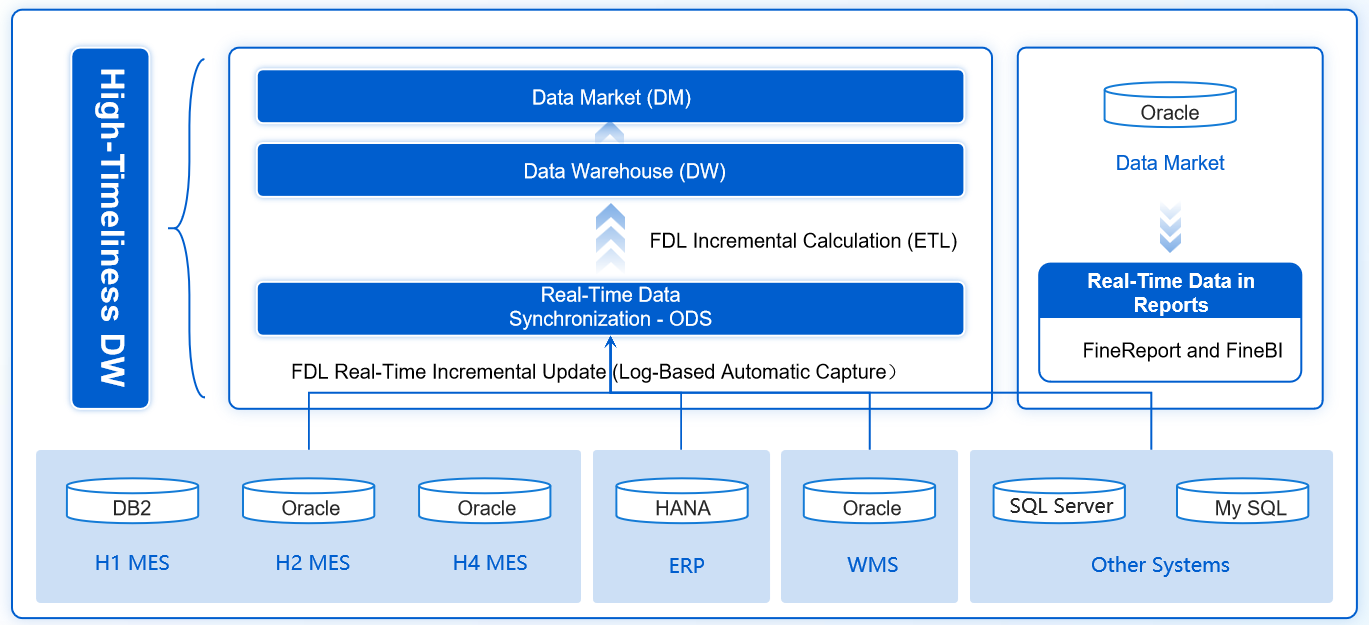
A strong product master data model and effective management help you achieve better business outcomes. Unified, high-quality product data leads to improved data quality, enhanced customer service, and increased operational efficiency. You can benefit from solutions like FineDataLink, which streamline data integration and governance. To optimize your product master data management, follow these steps:
- Define clear objectives and scope.
- Establish strong data governance.
- Monitor and validate data quality.
- Integrate data from all sources.
- Enforce data security and compliance.

Continue Reading About Product Master Data Model
Enterprise Data Integration: A Comprehensive Guide
What is enterprise data and why does it matter for organizations
Understanding Enterprise Data Centers in 2025
Enterprise Data Analytics Explained for Modern Businesses

The Author
Howard
Engineer Data Management & Ahli Data Research Di FanRuan
Related Articles

Data Hub vs Data Lake Key Differences and Use Case Explained
Data hub vs data lake: Compare structure, governance, and use cases to choose the right solution for your data integration and analytics needs.
Howard
Nov 09, 2025

Implement Data Governance Use Cases for Better Data Quality
Implement data governance use cases to boost data quality, ensure compliance, and enable accurate, reliable decision-making across your organization.
Howard
Nov 09, 2025

How to Create a Data Strategy Roadmap Step by Step
Build a data strategy roadmap step by step to align data initiatives, set clear goals, and drive business value with effective data management.
Howard
Nov 09, 2025



